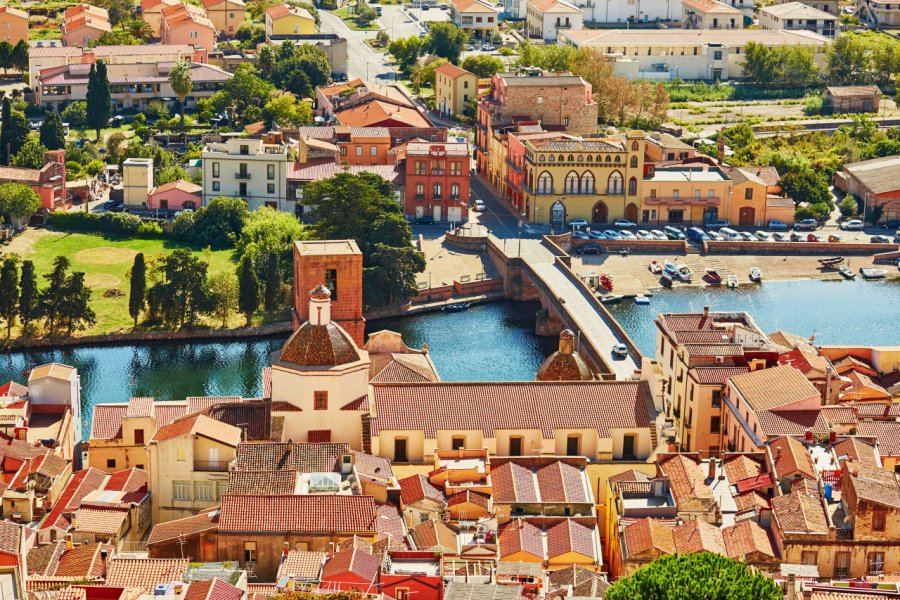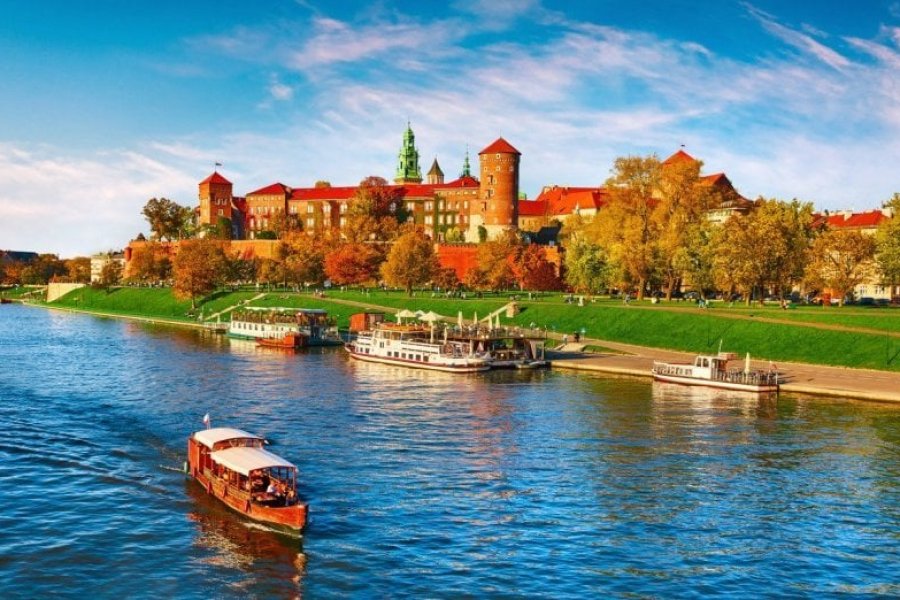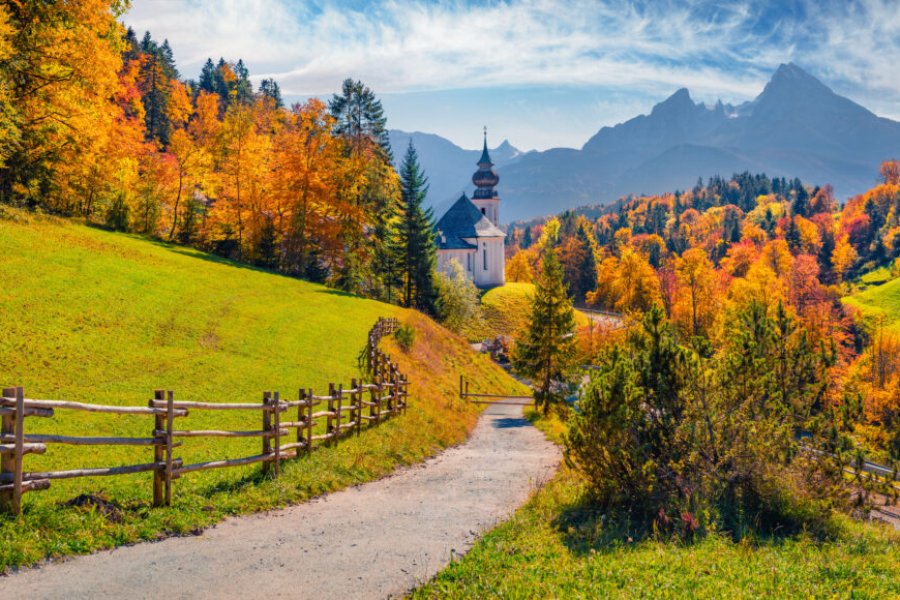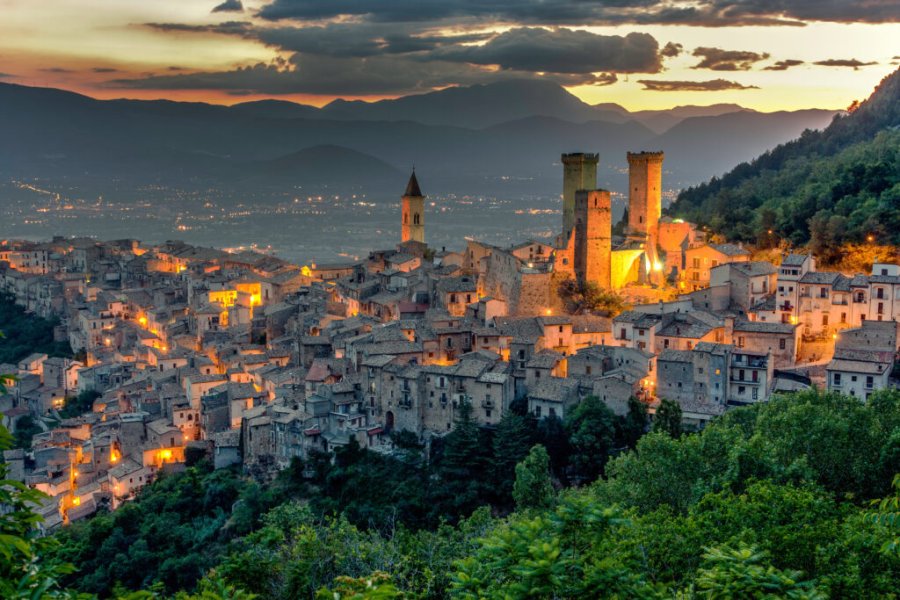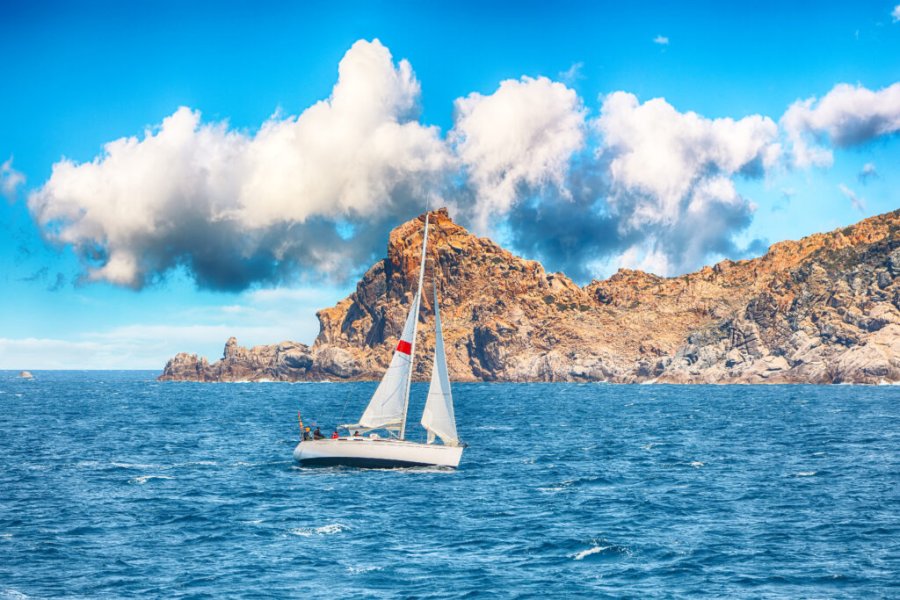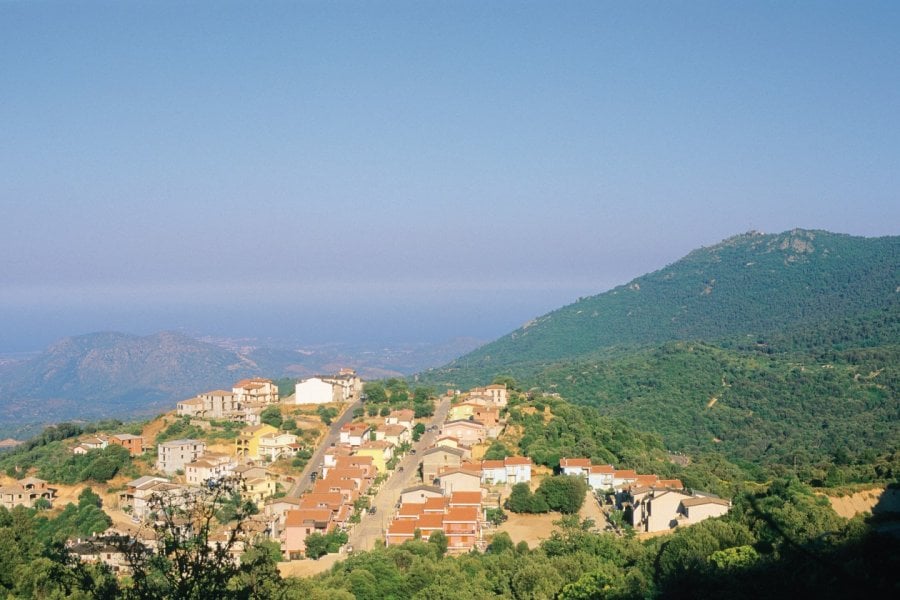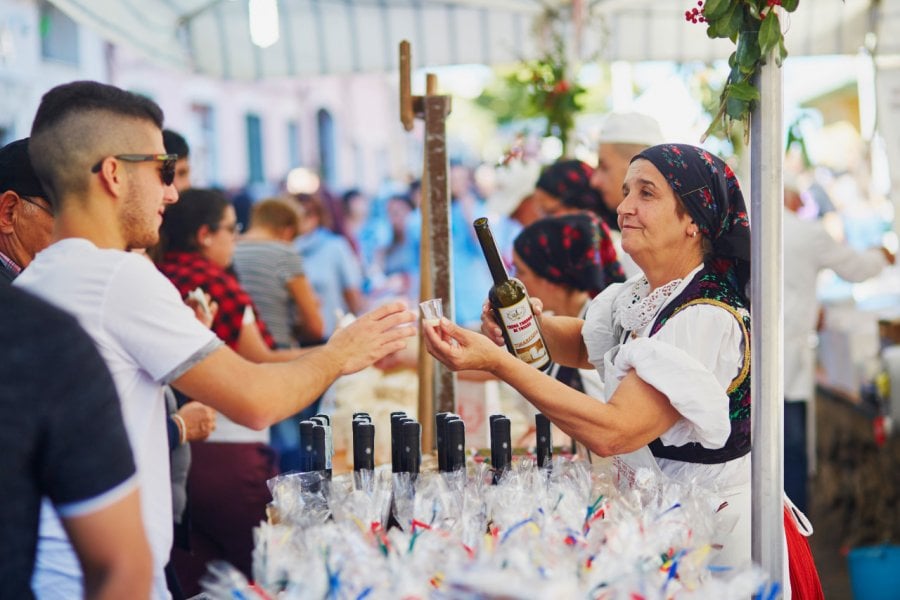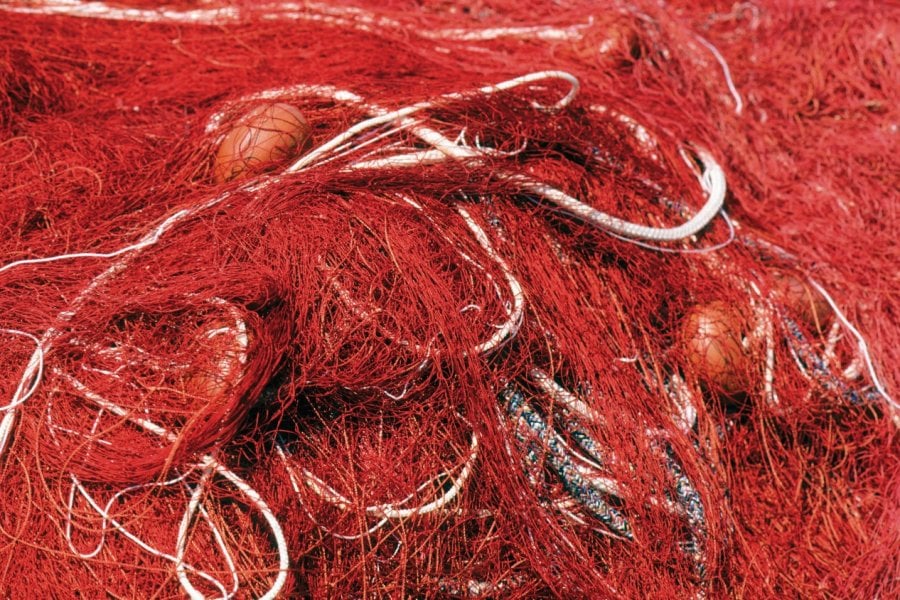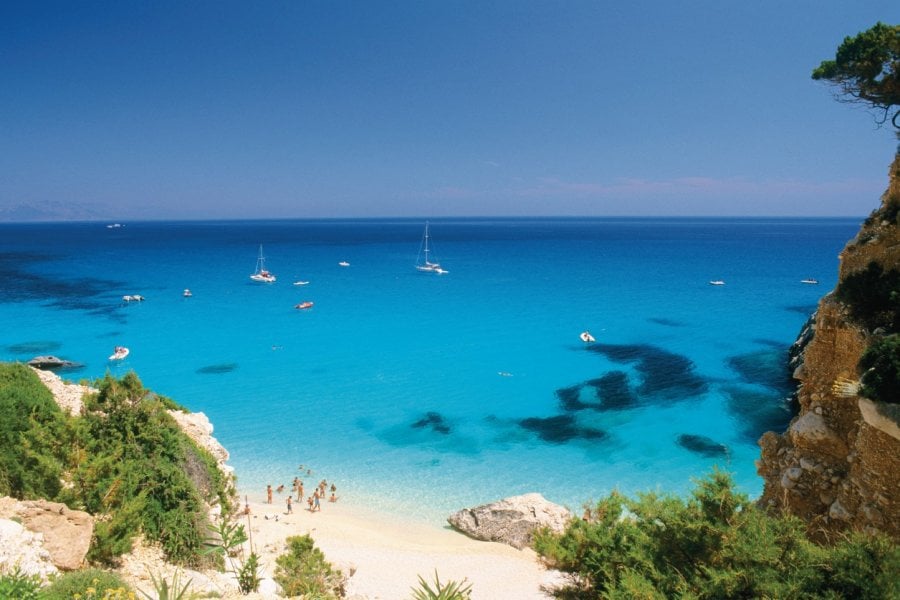Travel guide Sardinia
The second largest island in the Mediterranean, after Sicily, offers striking contrasts to those who take the time to explore it in all its diversity. From Porto Cervo, the ultra chic seaside resort in the north on the Costa Smeralda, to the prehistoric archaeological site of Su Nuraxi in the south, passing through the ghostly old mines of Montevecchio and Ingurtosu. Sardinia offers an extraordinary palette of surprising places. The landscapes between the cliffs offering a panoramic view and the coastline lined with beautiful beaches will also know how to intoxicate you like a good Sardinian wine, well accompanied by your Sardinia tourist guide. Less high than its Corsican neighbor, the island is nevertheless a paradise for hikers. Made up of 80% of mountains and wild and green hills, harsh reliefs in the Barbaria or steep horizons dotted with oak and olive trees centuries old in the Supramonte. It is not uncommon to come across shepherds, heading for the heights of the emerald-colored jewel. Sardinia is also the steep streets and old palaces of Cagliari, its capital, the sandy beaches of the Costa del Sud, the small coves of the Mediterranean Sea. The multicolored facades of Bosa, the ramparts of the medieval city of Alghero or the murals of Orgosolo are wonders not to be missed. You won't be able to see it all! The atmosphere of the peninsula invites you to relax. Villages such as Burgos bear witness to its medieval past. A vacation in Sardinia is also the opportunity to taste the typical cuisine of the region accompanied by its pecorino: the Sardinian cheese par excellence. In short, if you dream of a destination that combines paradisiacal beaches, archeological sites, small remarkable villages as well as the possibility of hiking in the mountains, take a plane ticket to Sardinia!
What to see, what to do Sardinia?
-
Book an activity
-
Customized travel
- The most beautiful cities Sardinia
When to go Sardinia ?
If you can, avoid Sardinia in July and August (especially the north of the island and more particularly its coasts): besides the scorching heat, the island is literally invaded at this time by tourists. It becomes more difficult to know where to stay if you have not booked in advance and hotel prices soar. The best time to visit Sardinia is undoubtedly spring: the weather is ideal, nature is in bloom and popular or religious festivals follow one another. The second half of September is also a good time. You can still enjoy the beaches, the tourist crowds have already passed and the prices are more accessible. However, the Mediterranean climate allows you to enjoy the island almost all year round. Tourist circuits are always available. Take advantage of these tours to discover the caves in Sardinia.
Suggested addresses Sardinia
Travel Sardinia
-
Find a hotel
-
Car Rental
-
International e-SIM package
-
Find a local agency
Sardinia offers multiple possibilities of excursions, from a few hours to several weeks for a complete exploration. It takes 3 weeks to do the grand tour of the island and enjoy its archaeological remains, its natural beauties, its countless beaches. For a first approach or a long weekend, get to know Cagliari and its surroundings. Its Mediterranean atmosphere, numerous museums, narrow streets and nearby beaches provide a complete change of scenery. In addition to the Nuraghic remains, Sardinia is also populated by charming Romanesque churches that provide a welcome break from the crowded beaches during the summer. Nevertheless, we have selected the most beautiful of them, from the small, little-known cove to the immense beach backed by the dunes and beaten by the winds. Finally, no one can claim to know Sardinia without having visited the shepherds of Nuoro.
Find unique Stay Offers with our Partners
How to go Sardinia
How to go alone
There are direct flights to Sardinia. The price can vary from simple to double. The price variation depends on the company used but, above all, on the time of booking. In order to obtain interesting prices, it is essential to book well in advance. It is also possible to come by ferry from France or Italy.
How to go on a tour
Sardinia lends itself well to a road trip or accompanied tours of a week or more to discover the four corners of the island. However, beware of the distances by bus because the roads can be long and winding from one site to another. There are also many thematic tours to choose from, depending on your interests: sports, gastronomy, cultural sites, must-see sites, etc. Your Petit futé guide is full of good addresses.
How to get around
The road network is in very good condition and buses serve most cities. Be careful if you rent a car because gas stations are not necessarily plentiful in mountainous areas and they are often closed on Sundays. The train is also an option, but not necessarily faster or more convenient.
Featured articles Sardinia
Discover Sardinia
If it is the immaculate beaches and crystal clear waters that seduce at first sight, the complex and mysterious Sardinian culture quickly takes over. The island has been inhabited since 6000 BC and has undergone many periods of invasion, which have created a unique heritage where magic rubs shoulders with the very present Catholic religion. The island is criss-crossed by colourful festivals where the Sardinians dress in their traditional costumes and sing songs from the depths of time. To get a feel for Sardinia, it is imperative to leave the gentle torpor of the coast to explore the interior. It is here that local craftsmanship is best expressed, from the famous Sardinian shepherd's knife to the olive oil protected by a designation. The Nuraghic Route allows you to travel the island from north to south, in search of its sentinel towers, the last vestiges of an ancient civilization considered to be the founder of Sardinian culture.
Pictures and images Sardinia
The 12 keywords Sardinia
1. #Berger
Reputedly brave and proud, the shepherd sums up the Sardinian identity. He is the guardian of the culture and of his flock of sheep, another emblem of the island. Gifted with a great wisdom, he is the one who has the proverb: "He who comes from beyond the seas is a thief". The Spaniards, once conquerors, described him as "crazy and brawler".
2. #Cutlery

In Sardinia, the shepherd's best friend is the knife. Cutlery is elevated to the rank of art and a museum pays tribute to it in the small town of Arbus. The finest blades come from the village of Pattada, in Nuoro. Damascus steel or chiselled, handle made of sheep horn: the resolza (retractable knife) is still made by hand.
3. #Domus de Janas

Domus de janas means "house of the fairies", and it's by this poetic name that the Sardinians refer to the funerary circles of their Neolithic ancestors. They date back to a period extending from 4000 BC to 2700 BC. Legend has it that the janas were witches, sometimes malevolent, sometimes unfortunate, who lived in these houses.
4. #Limba
If the word sounds like a summer hit, it's actually the Sardinian language. In the absence of a written set of rules, the Sardinian language is subject to nuances, and even differences, depending on the region. Today, it's the language closest to the one spoken by the ancient Romans. It is still spoken by 70% of the population.
5. #Malloreddus

To enjoy Sardinian pasta, turn to malloreddus, also known locally as cigiones, macarones caidos or cravaos. Made from durum wheat semolina, this pasta was traditionally handmade by women for special occasions. They are prepared in a tomato sauce and served with sausage.
6. #Myrte
This berry, halfway between blackcurrant and blueberry, is not eaten. It's best enjoyed as a black, syrupy liqueur as an aperitif or digestive. The Italians call it limoncello, the Sardinians murta. Each family has its own recipe, and it's only recently that production has been "industrialized" to promote this typically Sardinian product.
7. #Nuraghe
More than 7,000 of these remains of the Nuraghic civilization, which reached its peak in the Bronze Age, remain. Archaeologists are still investigating the significance of these round or conical stone towers. Scattered throughout the island, the nuraghes probably had several functions: military, religious and astronomical.
8. #Mamutones
The Mamutones parade from the village of Mamoiada (and others) is famous the world over. This pre-Christian pagan tradition is one of a kind. Whether it's the silent parade or the spine-chilling variety of masks on display during Carnival, spectators are left shivering and speechless during the procession.
9. #Pecorino
"To try it is to adopt it. This is what the Sardinians must have said to themselves when they stole the recipe from the Romans who came to invade them. This 100% sheep's milk cheese, the oldest in Italy, has become an essential product on Sardinian tables. It has a Protected Designation of Origin, just like Fiore Sardo, its smoked version.
10. #Tanca
The Sardinian farmer erected dry stone walls around his plots of land, redrawing the contours of the plateaus and meadows into tiny plots of land. The Spaniards, inspired by these landscape patterns, gave them the name of tancas, which means closed or blocked. These tancas are still a characteristic landscape of Sardinia.
11. #Tenores
Polyphonic singing has a very ancient musical tradition. Performed in a choir of 4 men, the rough melodies are part of a melancholy repertoire passed down orally. This song imitates the sounds of the agro-pastoral universe: love, mythology, satire, popular traditions. This song is a UNESCO World Heritage Site.
12. #Tombe di Giganti

The Nuragic civilization left tombs that the Sardinians have called Tombs of the Giants. The mausoleums of 5 to 10 meters long could contain more than a hundred bodies. The tomb consists of a corridor, often covered, at the end of which stands a row of monoliths placed in an arc and placed on edge.
You are from here, if...
You take possession of your sandbox with an umbrella, folding chairs and a cool box.
You're dressed to the nines, especially in mountain villages and in the evenings.
You go out shopping or for ice cream at passeggiata time, between 6pm and 9pm.
You take the time to visit the center of the island, deserted by tourists. You love the narrow mountain roads and the peace and quiet of timeless villages.
You sprinkle your pasta with shavings ofpecorino or botarga (mule egg powder) rather than grated parmesan.
You prefer a meal in a localagriturismo rather than a pizzeria reserved for tourists.
You're proud of the pastoral origins of your culture and you know everything there is to know about the Nuraghic civilization.
You drive slowly, you take the time to stop and chat with someone, and nobody honks. Nobody's in a hurry or under stress. Everything's just fine!

